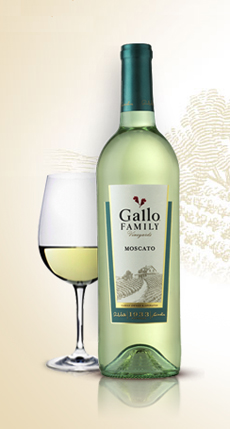TIP OF THE DAY: Try A Glass Of Muscat (Moscato) For Dessert
 For dessert: a glass of Moscato wine. Photo courtesy Gallo Family Vineyards. |
America doesn’t enjoy enough dessert wines. From late harvest Rieslings to sparkling red Italian Brachettos, hearty Ports and unctuous Sauternes, a plethora of dessert wines is waiting to be discovered.
A sweet wine can be enjoyed with more than just dessert. Think of the sweet carbonated beverages that are enjoyed at lunch, dinner and in-between. It’s easy (and much more delicious and food-friendly) to substitute a light, sweet wine like Muscat (Moscato in Italian). The Muscat grape is not well known in the U.S. But it’s so prevalent the world over that wine historians believe it may be the oldest domesticated grape variety—the one from which all other grape varieties are descended. While it is possibly to vinify the grape into a dry wine, Muscat/Moscato is more popular as a sweet dessert wine. Not only is Muscat very flavorful, but it can also be very inexpensive. The low cost of growing the grapes in other countries translates into bargain Muscats. This summer, we’ve been enjoying Gallo Family Moscato from the famed California vintners, made from Argentina Moscato grapes. The cost: just $5.99 per 750 ml bottle. |
|
|
Sweet yet elegant and sophisticated, the lush, fruity aroma beckons from the glass. The flavors—notes of peaches and honey—are satisfying enough to be the dessert, for fewer than 130 calories per glass. A glass of sweet wine, with or without a piece of fresh fruit, is often served as dessert in Europe. You can also serve it with cookies: Follow the Italian tradition of serving Vin Santo, a dessert wine from the Tuscany region of Italy, with biscotti and other cookies (shortbread works nicely).
|
||


